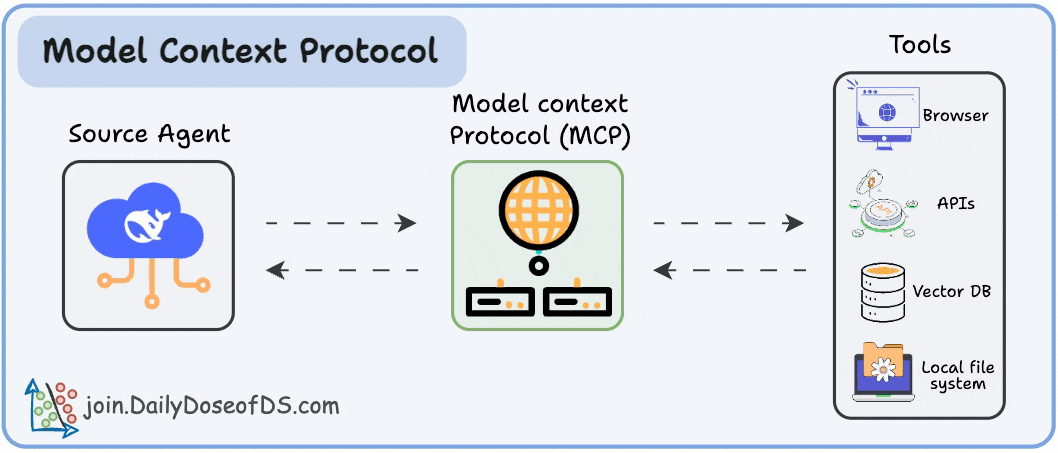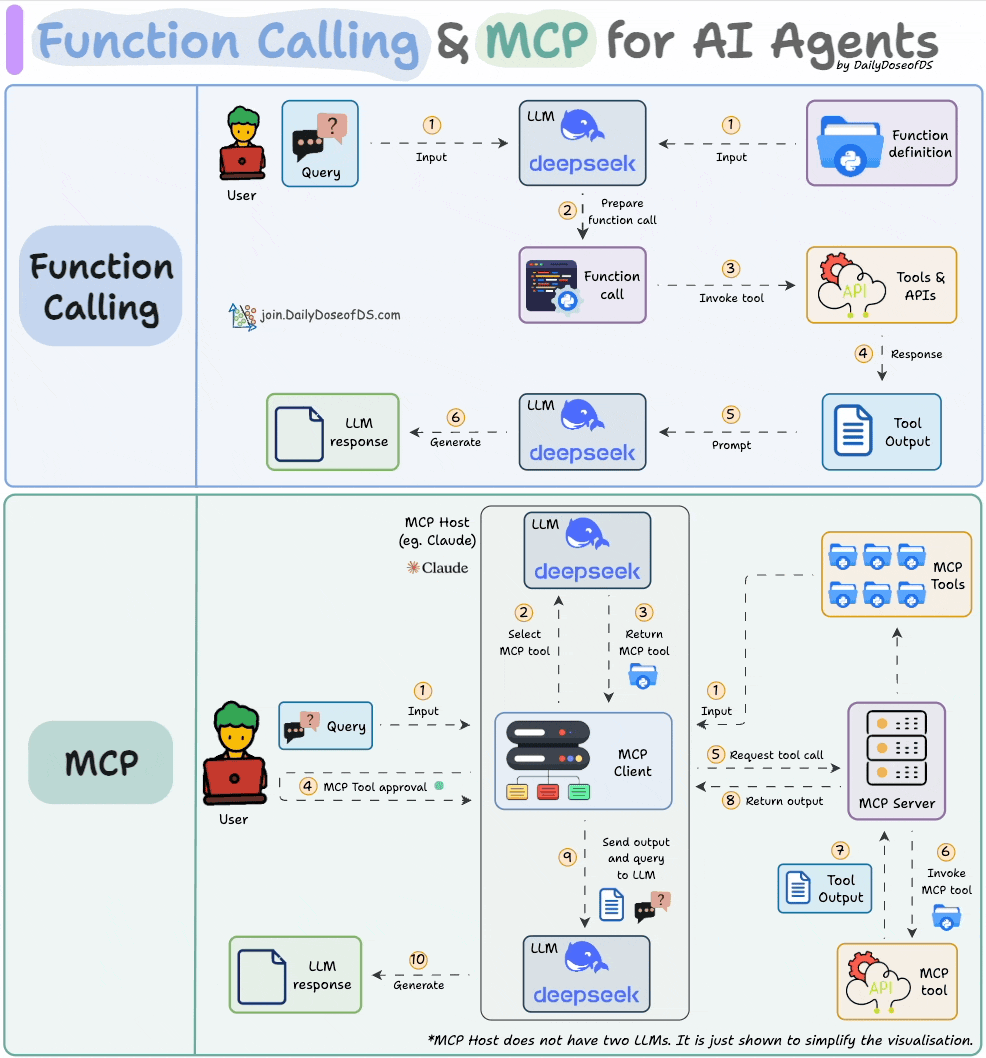Build a Full-Fledged MCP Workflow Using tools, Resources, and Prompts
The full MCP blueprint—Part 4
Part 4 of the MCP crash course is now available, where we are building a full-fledged MCP workflow using tools, resources, and prompts.
More specifically, it covers:
What exactly are resources and prompts in MCP.
Implementing resources and prompts server-side.
How tools, resources, and prompts differ from each other.
Using resources and prompts inside the Claude Desktop.
A full-fledged real-world use case powered by coordination across tools, prompts, and resources.
Just like our past series on RAG and AI Agents, this series is both foundational and implementation-heavy, walking you through everything step-by-step.
Here’s what we have done so far:
In Part 1, we introduced:
Why context management matters in LLMs.
The limitations of prompting, chaining, and function calling.
The M×N problem in tool integrations..
And how MCP solves it through a structured Host–Client–Server model.
In Part 2, we went hands-on and covered:
The core capabilities in MCP (Tools, Resources, Prompts).
How JSON-RPC powers communication.
Transport mechanisms (Stdio, HTTP + SSE).
A complete, working MCP server with Claude and Cursor.
Comparison between function calling and MCPs.
In Part 3, we built a fully custom MCP client from scratch:
How to build a custom MCP client and not rely on prebuilt solutions like Cursor or Claude.
What the full MCP lifecycle looks like in action.
The true nature of MCP as a client-server architecture, as revealed through practical integration.
How MCP differs from traditional API and function calling, illustrated through hands-on implementations.
Why care?
Most LLM workflows today rely on hardcoded tool integrations. But these setups don’t scale, they don’t adapt, and they severely limit what your AI system can actually do.
MCP solves this.
Think of it as the missing layer between LLMs and tools, a standard way for any model to interact with any capability: APIs, data sources, memory stores, custom functions, and even other agents.
Without MCP:
You’re stuck gluing every tool manually to every model.
Context sharing is messy and brittle.
Scaling beyond prototypes is painful.
With MCP:
Models can dynamically discover and invoke tools at runtime.
You get plug-and-play interoperability between systems like Claude, Cursor, LlamaIndex, CrewAI, and beyond.
You move from prompt engineering to systems engineering, where LLMs become orchestrators in modular, reusable, and extensible pipelines.
This protocol is already powering real-world agentic systems.
And in this crash course, you’ll learn exactly how to implement and extend it, from first principles to production use.
Read the first two parts here:
Thanks for reading!



